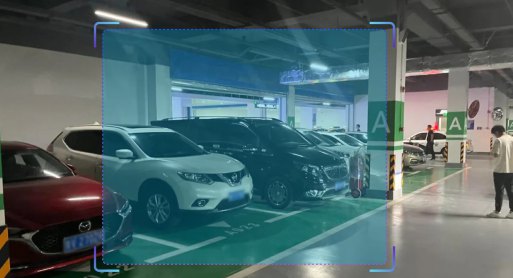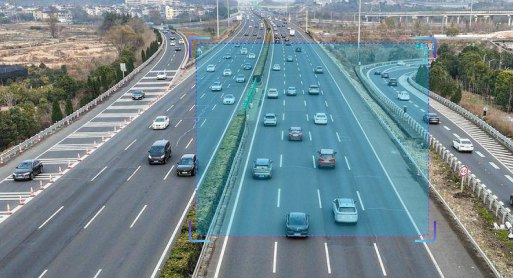
Traffic Congestion Detection

Algorithm Introduction
The traffic congestion detection algorithm primarily performs the following functions:
- ● Vehicle Density Analysis: Counts road vehicle population and calculates density metrics per unit area or length.
- ● Speed Monitoring: Tracks vehicle movement speeds to identify congestion thresholds (e.g., speeds below 20km/h).
- ● Stagnation Detection: Identifies vehicles experiencing prolonged stillness (e.g., stationary for over 1 minute).
- ● Congestion Level Classification: Grades congestion severity (light/moderate/severe) based on composite metrics including vehicle density, speed, and stagnation duration.
- ● Real-time Alerting: Transmits congestion warnings to traffic management centers with location and severity details.
- ● Data Visualization: Provides real-time congestion hotspot mapping to support traffic dispatching decisions."
Application Value
-

Urban Traffic Management
Real-time Monitoring: Analyzes traffic flow and vehicle speeds, dynamically adjusting signal timing (e.g., ""green wave"" optimization) Congestion Alleviation: Automatically recommends detour routes and pushes navigation updates to drivers via mobile apps -

Highway Monitoring
Accident Early Warning: Detects abnormal parking or low-speed vehicles to prevent secondary collisions Variable Speed Limit Control: Dynamically adjusts speed limits based on traffic congestion levels -

Intelligent Traffic Dispatch
Police Resource Optimization: Combines AI predictions to recommend optimal patrol routes and dispatch strategies -

Autonomous Driving Assistance
Provides real-time traffic data to autonomous vehicles for enhanced route planning optimization
FAQ
-
Algorithm AccuracyAll algorithms published on the website claim accuracies above 90 %. However, real-world performance drops can occur for the following reasons:
(1) Poor imaging quality, such as
• Strong light, backlight, nighttime, rain, snow, or fog degrading image quality
• Low resolution, motion blur, lens contamination, compression artifacts, or sensor noise
• Targets being partially or fully occluded (common in object detection, tracking, and pose estimation)
(2) The website provides two broad classes of algorithms: general-purpose and long-tail (rare scenes, uncommon object categories, or insufficient training data). Long-tail algorithms typically exhibit weaker generalization.
(3) Accuracy is not guaranteed in boundary or extreme scenarios.
-
Deployment & InferenceWe offer multiple deployment formats—Models, Applets and SDKs.
Compatibility has been verified with more than ten domestic chip vendors, including Huawei Ascend, Iluvatar, and Denglin, ensuring full support for China-made CPUs, GPUs, and NPUs to meet high-grade IT innovation requirements.
For each hardware configuration, we select and deploy a high-accuracy model whose parameter count is optimally matched to the available compute power.
-
How to Customize an AlgorithmAll algorithms showcased on the website come with ready-to-use models and corresponding application examples. If you need further optimization or customization, choose one of the following paths:
(1) Standard Customization (highest accuracy, longer lead time)
Requirements discussion → collect valid data (≥1 000 images or ≥100 video clips from your scenario) → custom algorithm development & deployment → acceptance testing
(2) Rapid Implementation (Monolith:https://monolith.sensefoundry.cn/)
Monolith provides an intuitive, web-based interface that requires no deep AI expertise. In as little as 30 minutes you can upload data, leverage smart annotation, train, and deploy a high-performance vision model end-to-end—dramatically shortening the algorithm production cycle.






